|
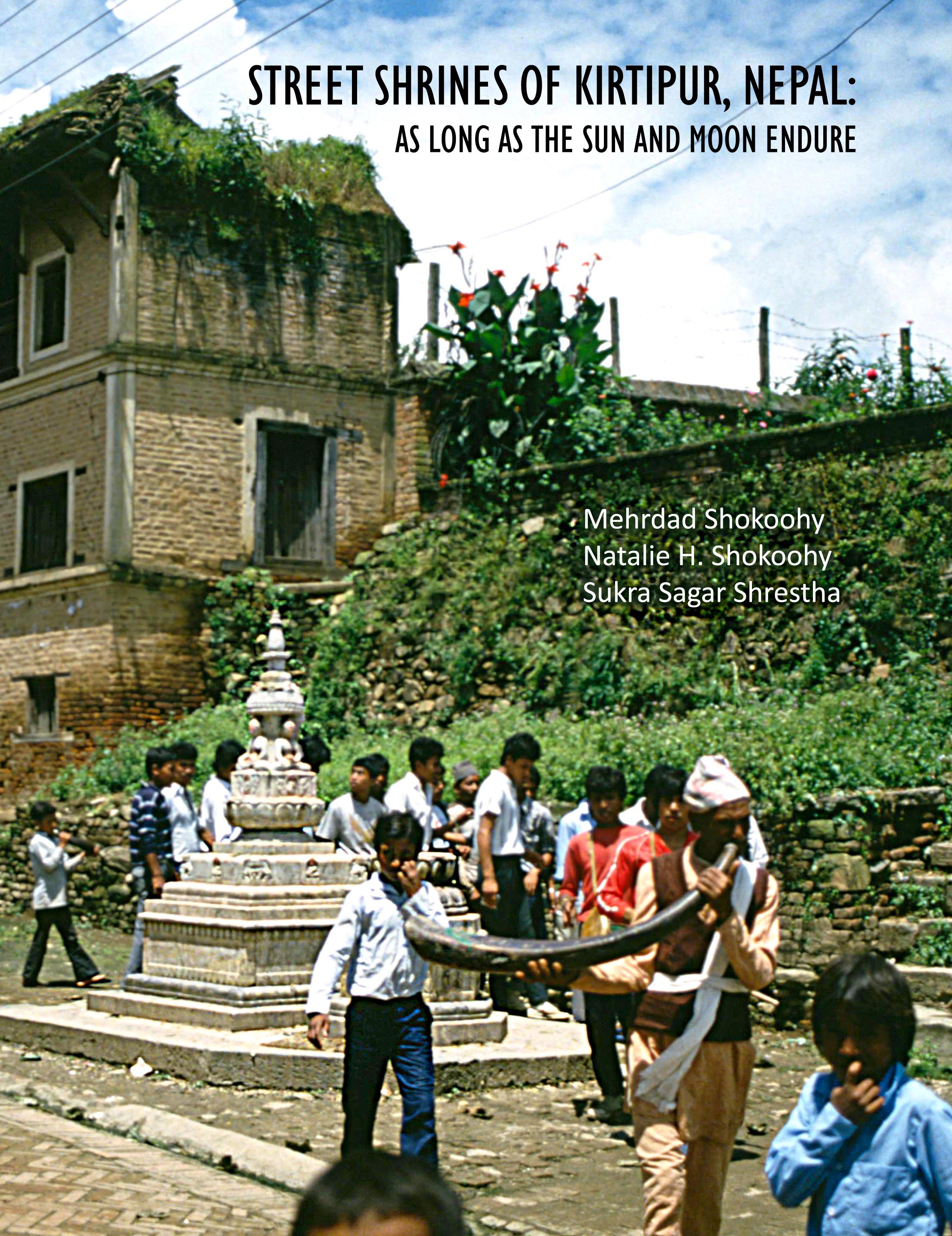 STREET SHRINES OF KIRTIPUR, NEPAL: STREET SHRINES OF KIRTIPUR, NEPAL:
as Long as the Sun and Moon Endure
Mehrdad Shokoohy; Natalie H. Shokoohy; Sukra Sagar Shrestha
London, publication date: 30 April 2014
440 pp; illus: 168 colour photographs; 320 monochrome photographs; 9 maps; 11 diagrams, 3 Appendices, glossary, bibliography, index
ISBN: 978-1-870606-11-0 Hardback
PRICE: Ł58.00 plus p&p; US$78.00 plus p&p
The streets of historic Kirtipur, as with other towns of the Kathmandu Valley, are studded with small shrines dedicated to clan and family gods, the Hindu deities or to the Lord Buddha. These shrines, many not higher than eye-level, are perhaps the most distinct landmarks – or nodes – of the urban environment, and while the tiered roofs of the grand temples distinguish the skyline and the townscape, the street shrines are features which, apart from their religious and social significance, contribute to the individuality of character and the disposition of each street or neighbourhood.
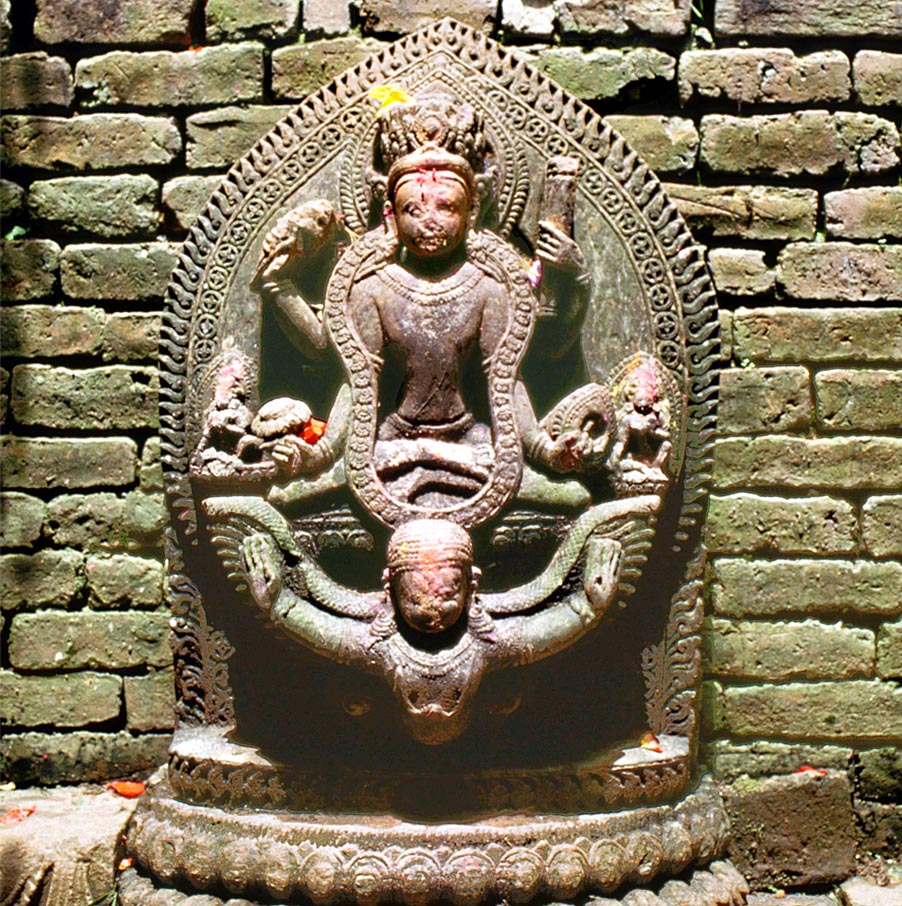 Erected by private citizens as memorials or acts of piety, to last as long as the sun and moon endure, the shrines often incorporate works of artistic merit, but unlike the imposing monuments tend to be taken almost for granted. The study focuses on the shrines’ chronology from the earliest specimens to the end of the twentieth century, the reasons for their erection, their typology and their iconography with the aim of providing a broad understanding of such features in a wider perspective for all Newar settlements. The study also offers a methodology for recording valuable street features with the treatment given to works of art preserved in museums. Erected by private citizens as memorials or acts of piety, to last as long as the sun and moon endure, the shrines often incorporate works of artistic merit, but unlike the imposing monuments tend to be taken almost for granted. The study focuses on the shrines’ chronology from the earliest specimens to the end of the twentieth century, the reasons for their erection, their typology and their iconography with the aim of providing a broad understanding of such features in a wider perspective for all Newar settlements. The study also offers a methodology for recording valuable street features with the treatment given to works of art preserved in museums.
In none of the towns of the Kathmandu Valley have such shrines ever been the subject of systematic study. It is perhaps the fate of the most common and best-loved objects to be taken for granted. The shrines exist where they would be expected and are so much part of everyday life that it seems every detail about them is known, and perhaps it appears superfluous to focus on each shrine for its particular features. Nevertheless, not only does each shrine bear the marks of its own relationship with its immediate urban space, but together the shrines reflect the history and the social life of the town. Furthermore, when looked at closely, no two shrines are exactly the same – each offers certain individual characteristics and many are of intrinsic artistic value.
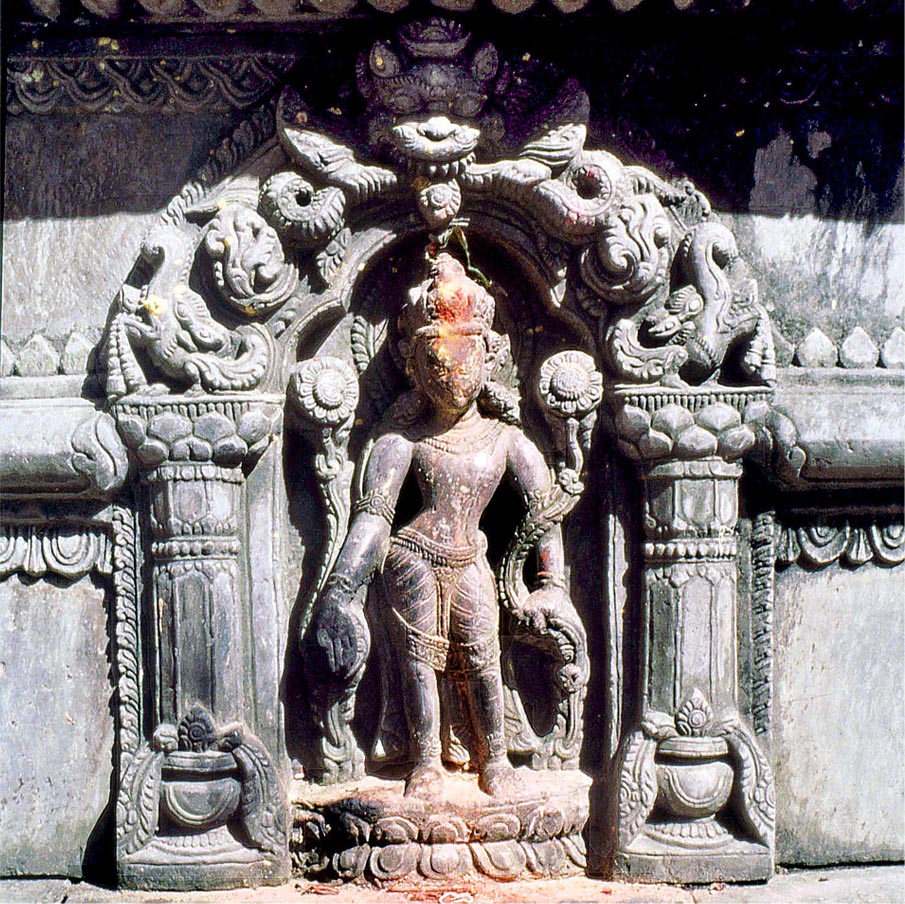 Street shrines are not a feature of Kirtipur alone, but appear in all towns and villages of the Kathmandu Valley. A record of the shrines of Kirtipur, focussing on their chronology, the reasons for their erection, their typology and their iconography could provide a broader understanding of such features in a wider perspective for all Newar settlements. Many of the shrines contain or are in themselves objects of art, valuable from both the historic and cultural point of view, let alone their unwelcome market value, which has already resulted in the theft of many objects, a world-wide problem for works of art in the public domain. The catalogue, which includes photographs of most individual items in situ, aims to provide a permanent record of the Kirtipur shrines and their components as they were in the beginning of the twenty-first century. Street shrines are not a feature of Kirtipur alone, but appear in all towns and villages of the Kathmandu Valley. A record of the shrines of Kirtipur, focussing on their chronology, the reasons for their erection, their typology and their iconography could provide a broader understanding of such features in a wider perspective for all Newar settlements. Many of the shrines contain or are in themselves objects of art, valuable from both the historic and cultural point of view, let alone their unwelcome market value, which has already resulted in the theft of many objects, a world-wide problem for works of art in the public domain. The catalogue, which includes photographs of most individual items in situ, aims to provide a permanent record of the Kirtipur shrines and their components as they were in the beginning of the twenty-first century. In the last half century many artifacts have been stolen from the Kirtipur shrines; some during the several years of research for this book. Photographs and detailed records given in the book document their rightful place.
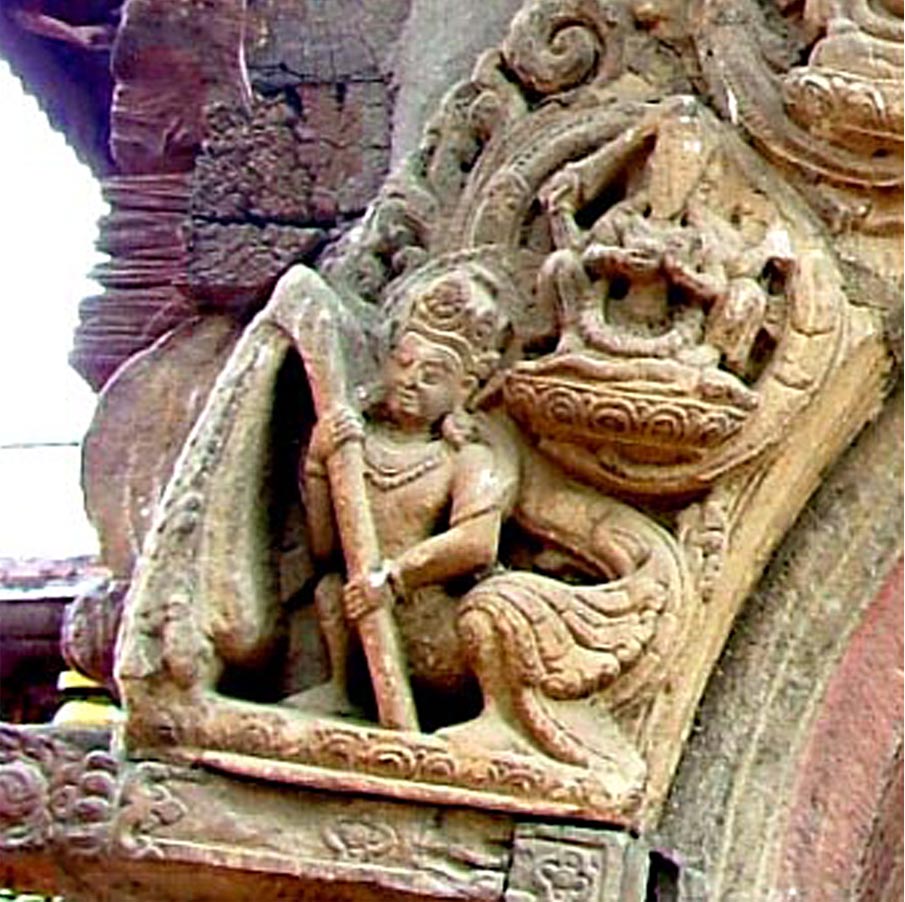 CONTENTS: CONTENTS:
PREFACE
1 INTRODUCTION
2 THE TOWN AND ITS PEOPLE
3 STREET SHRINES AND THEIR ROLE IN THE URBAN FABRIC
Founders of the shrines
4 TYPOLOGY
Hindu Shrines Ganeś Shrines Siva Shrines Narayana Devi
Buddhist Shrines
Shrines venerated by Hindus and Buddhists Tulasi Moth Lukama-dyo Kumara mandala
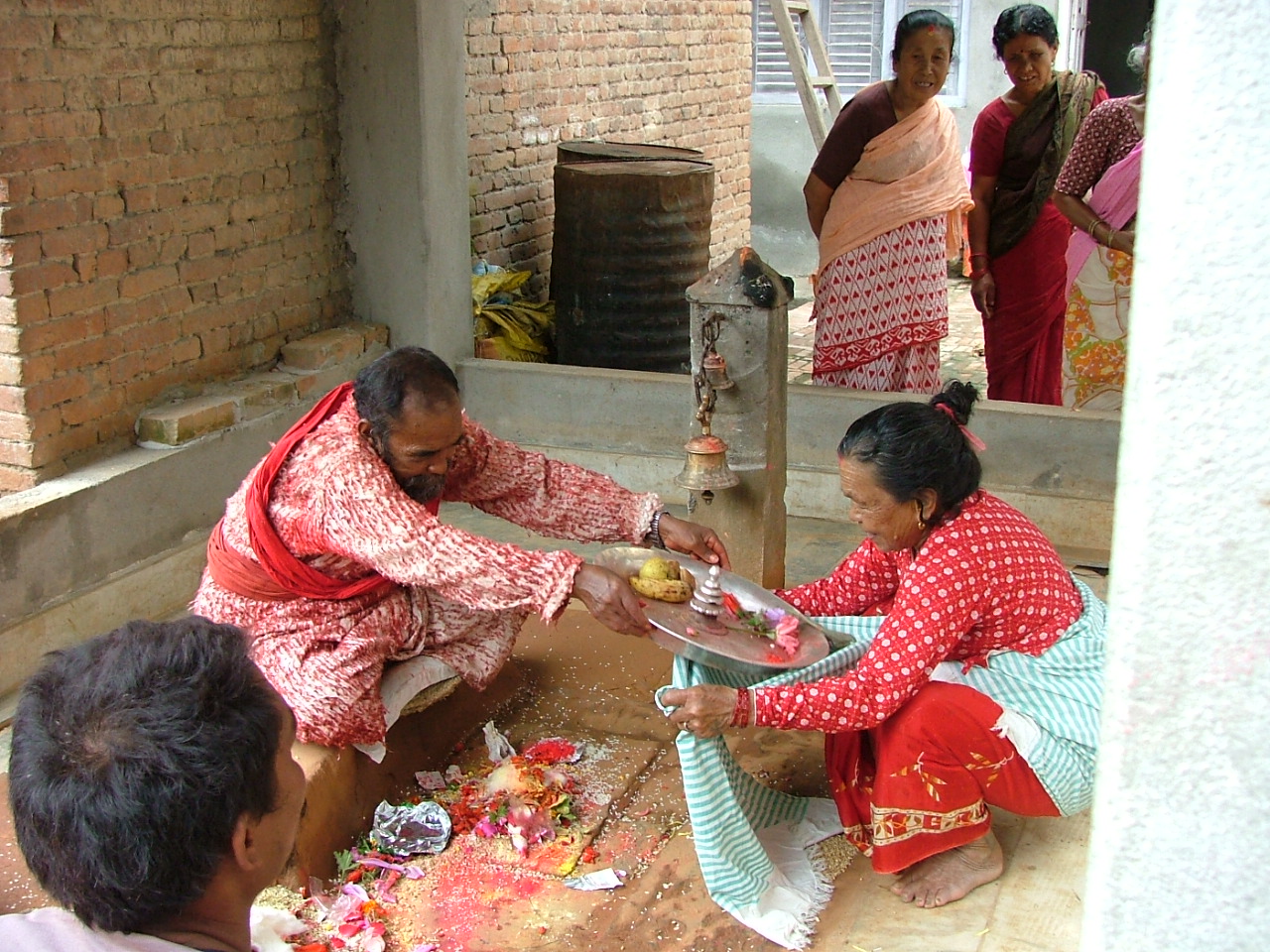 CATALOGUE CATALOGUE
APPENDIX I: DIGU-DYAH SHRINES
APPENDIX II: LIST OF SHRINES BY TYPE IN APPROXIMATE CHRONO-LOGICAL ORDER
APPENDIX III: LOST AND STOLEN OBJECTS FROM THE STREET SHRINES
GLOSSARY
BIBLIOGRAPHY
INDEX
Priest performing the yearly ceremony after the construction of a pavilion over an aniconic stone at Pengathan
|




